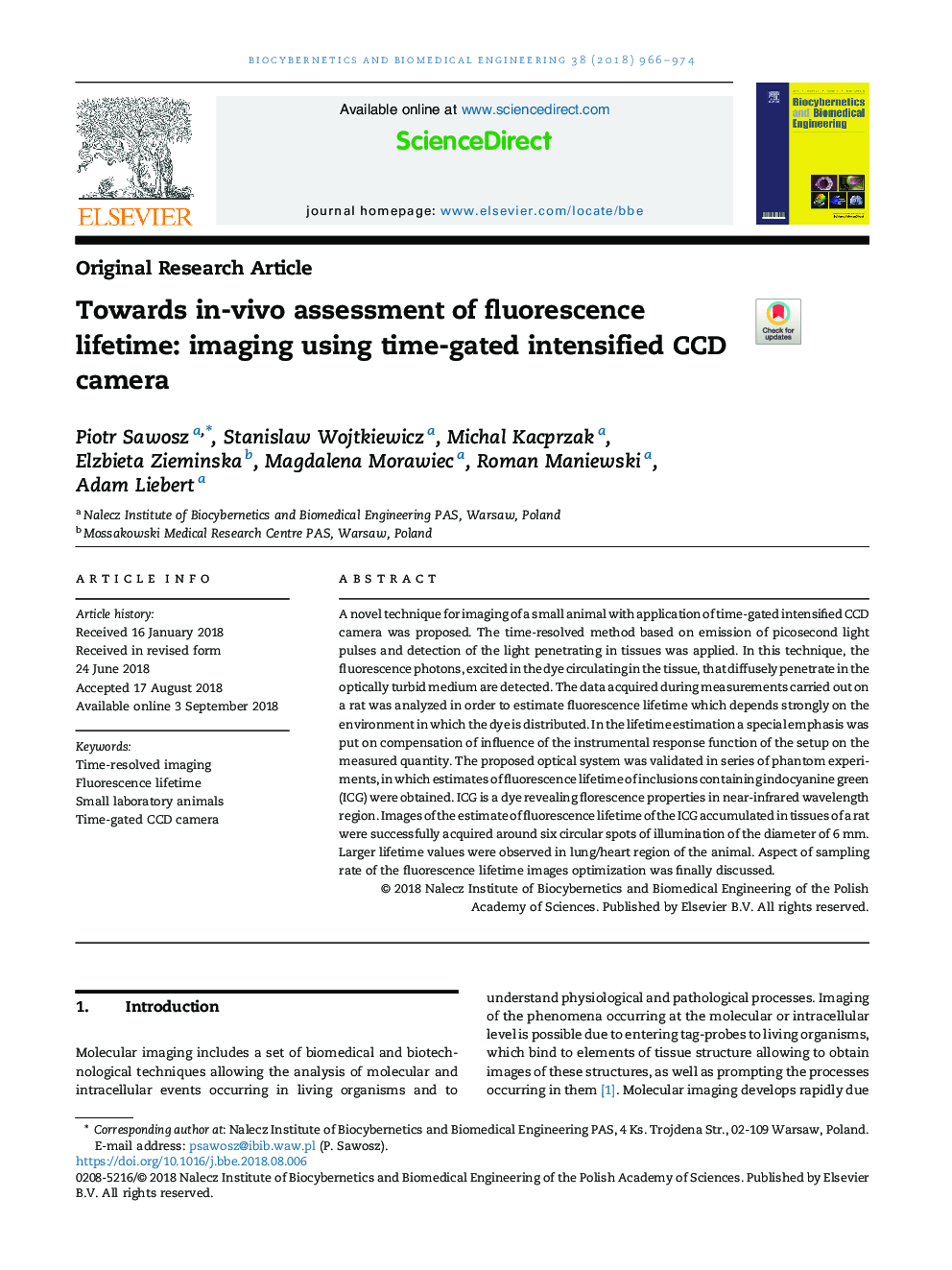| Article ID | Journal | Published Year | Pages | File Type |
|---|---|---|---|---|
| 10130611 | Biocybernetics and Biomedical Engineering | 2018 | 9 Pages |
Abstract
A novel technique for imaging of a small animal with application of time-gated intensified CCD camera was proposed. The time-resolved method based on emission of picosecond light pulses and detection of the light penetrating in tissues was applied. In this technique, the fluorescence photons, excited in the dye circulating in the tissue, that diffusely penetrate in the optically turbid medium are detected. The data acquired during measurements carried out on a rat was analyzed in order to estimate fluorescence lifetime which depends strongly on the environment in which the dye is distributed. In the lifetime estimation a special emphasis was put on compensation of influence of the instrumental response function of the setup on the measured quantity. The proposed optical system was validated in series of phantom experiments, in which estimates of fluorescence lifetime of inclusions containing indocyanine green (ICG) were obtained. ICG is a dye revealing florescence properties in near-infrared wavelength region. Images of the estimate of fluorescence lifetime of the ICG accumulated in tissues of a rat were successfully acquired around six circular spots of illumination of the diameter of 6Â mm. Larger lifetime values were observed in lung/heart region of the animal. Aspect of sampling rate of the fluorescence lifetime images optimization was finally discussed.
Related Topics
Physical Sciences and Engineering
Chemical Engineering
Bioengineering
Authors
Piotr Sawosz, Stanislaw Wojtkiewicz, Michal Kacprzak, Elzbieta Zieminska, Magdalena Morawiec, Roman Maniewski, Adam Liebert,
